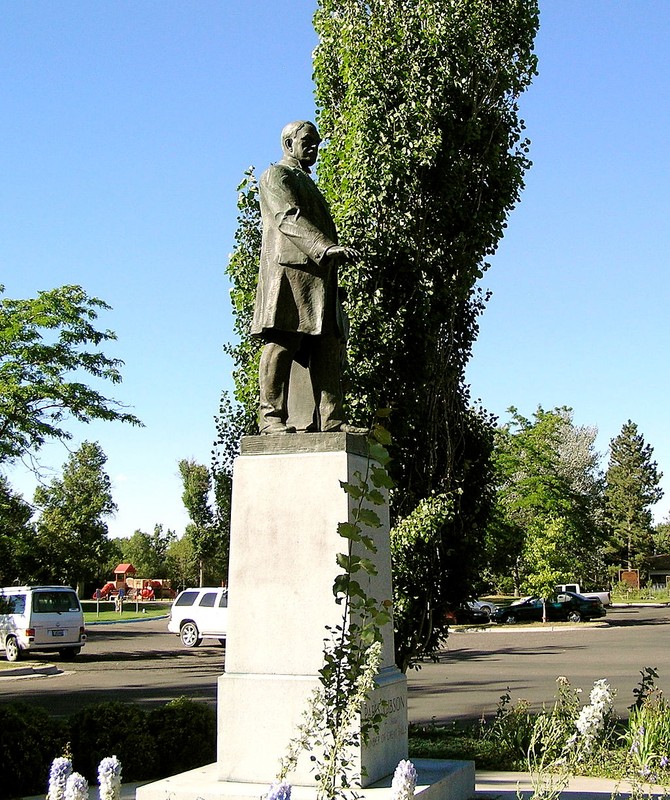Paris Gibson Statue
Introduction
Text-to-speech Audio
Images
Paris Gibson (1830-1920) founded Great Falls in 1882. He served as mayor and later became a U.S. Senator.

Backstory and Context
Text-to-speech Audio
Paris Gibson was born on July 1, 1830 in Brownfield, Maine. He graduated from Bowdoin College in 1851 and started to work in real estate. Three years later, he was elected to the Maine House of Representatives. He then moved to Minneapolis in 1858 where he built flour and woolen mills. These were apparently unsuccessful and Gibson moved west in 1879, settling in Fort Benton. There, he engaged in coal mining, sheep ranching (he was the first to introduce large-scale sheep ranching in the state), railroads, and hydroelectric development.
The next year he visited what would become Great Falls. Upon seeing the waterfalls in the Missouri River, he was convinced that they could be harnessed into hydroelectric power. He founded the town in 1882 and encouraged his famous friend and owner of the Great Northern Railway, James J. Hill, to build the railroad through Great Falls. The railroad quickly helped establish Great Falls as a major economic center.
Gibson continued his business ventures and was elected mayor in 1882. He later served as a delegate to the state's constitutional convention in 1889, and was elected state senator in 1890. The next year he became a U.S. Senator in 1901 and served until 1905. He continued his business activities until he died in 1920.
While Gibson achieved great success in his public life, he experienced tragedy in his personal life. He and his wife, Valeria, had four children. Only two sons, Theodore and Philip, reached adulthood. In 1900, Valeria died in mysterious circumstances. According to the official account of her death at the time, she committed suicide by falling out of the window of their apartment in the Park Hotel. It appears that what actually happened was that Theodore became suddenly enraged and threw her down the stairs, killing her. Her body was then, apparently, thrown out of their apartment window to make it look like a suicide. However, there was speculation that Gibson was involved somehow in Valeria's death. He was never tried but rumors of his role continued for the rest of this life. Philip died in 1912 at a mental hospital and Theodore died there as well some time later.
Sources
"Biography." Biographical Directory of the United States Congress. Accessed July 31, 2020. https://bioguideretro.congress.gov/Home/MemberDetails?memIndex=G000164.
"Paris Gibson Collection, 1914-[circa 1939]." University of Montana, Mansfield Library, Archives and Special Collections. Retrieved from Archives West on July 31, 2020. http://archiveswest.orbiscascade.org/ark:/80444/xv05476.
"Paris Gibson, Man of Mystery." Visit Great Falls Montana. Accessed July 31, 2020. https://visitgreatfallsmontana.org/2017/10/12/paris-gibson-man-mystery.
Wikimedia Commons: https://commons.wikimedia.org/wiki/File:Paris_Gibson_statue.JPG
